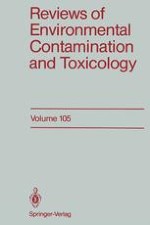1988 | Buch
Reviews of Environmental Contamination and Toxicology
Continuation of Residue Reviews
herausgegeben von: George W. Ware
Verlag: Springer New York
Buchreihe : Reviews of Environmental Contamination and Toxicology
Enthalten in: Professional Book Archive
